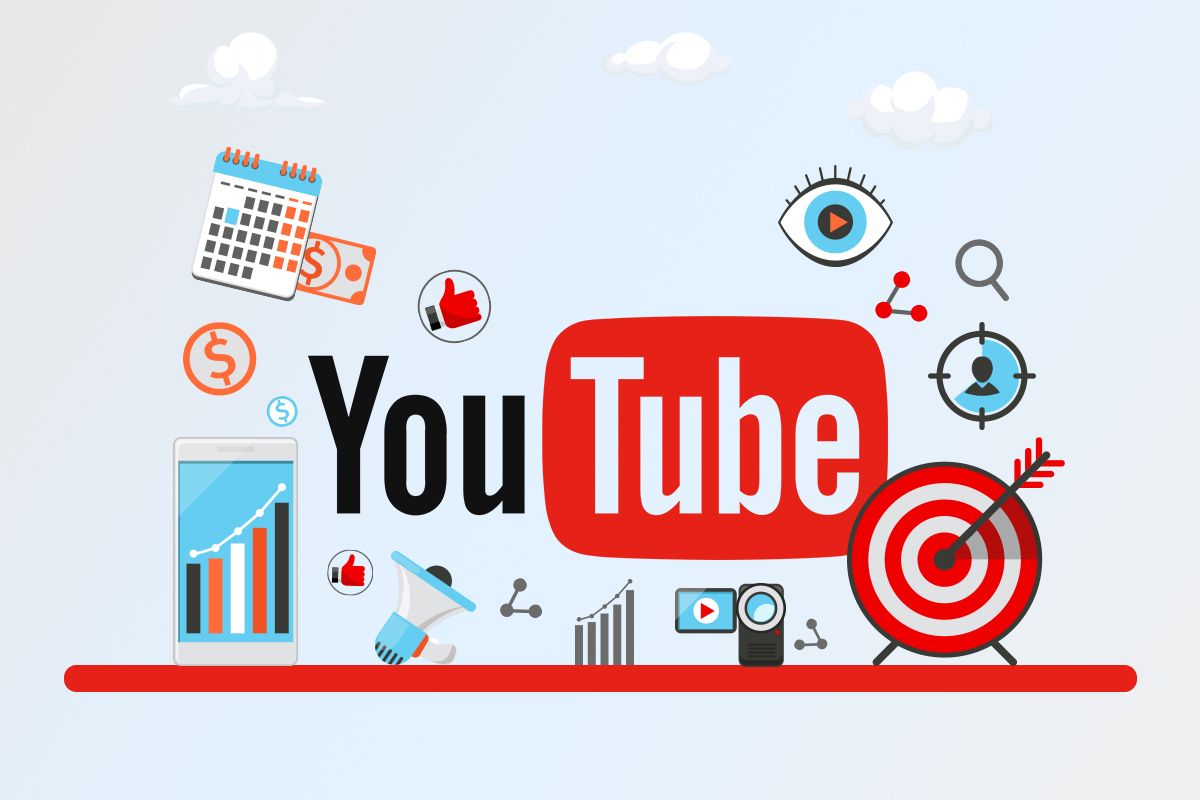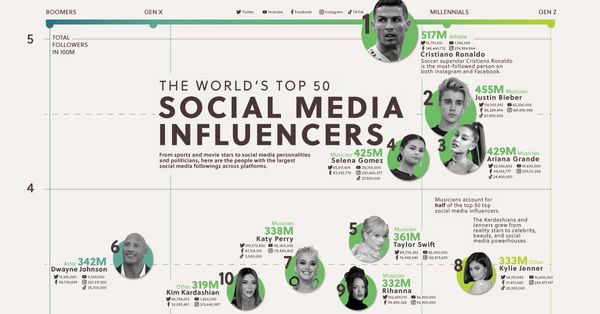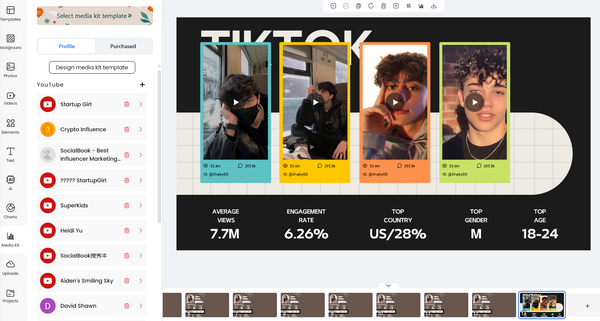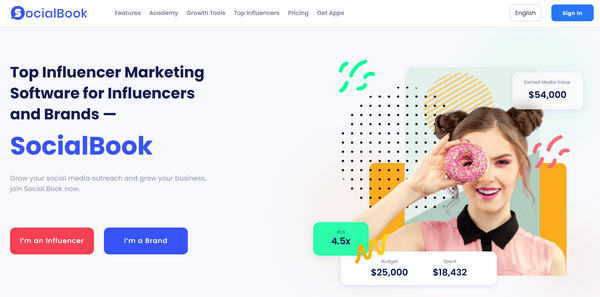YouTube remains a leading platform for content creators and brands, with over 2 billion active users each month. As influencer marketing grows, understanding what constitutes a "good" or "average" engagement rate is crucial for brands looking to maximize their impact.
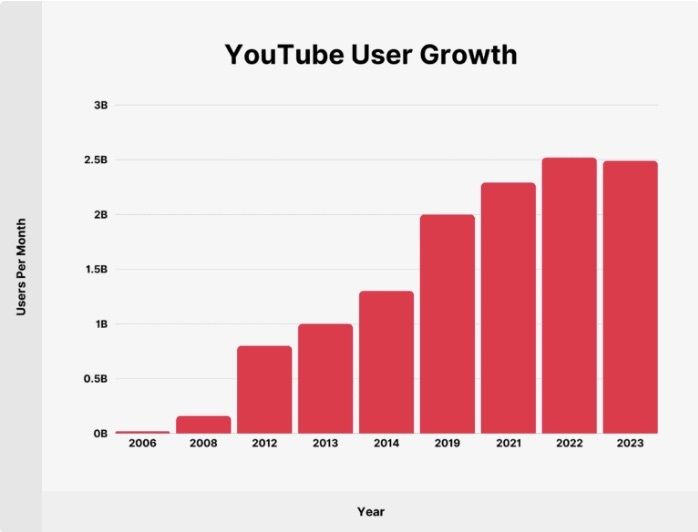
In 2024, engagement rates on YouTube vary widely based on follower count. This article explores average engagement rates, trends in engagement growth, and the correlation between follower numbers and performance, helping brands assess what qualifies as an effective engagement rate.
A high engagement rate is invaluable in today’s digital world. With YouTube being the second most visited website globally, an active presence allows brands to reach a massive audience. However, success isn’t just about having a channel—it’s driven by engagement. High engagement not only strengthens relationships with your audience but also boosts visibility, as YouTube’s algorithm prioritizes content with strong interactions.
What Are the Most Important YouTube Metrics for Marketing Success?
YouTube metrics are key to understanding and optimizing channel performance, serving as essential tools for refining video marketing strategies. Among the most important indicators are engagement rate, follower growth rate, and engagement growth, all of which provide valuable insights into how well a channel is resonating with its audience. These metrics—along with other key performance indicators like view count and watch time—help brands and creators evaluate the success of their campaigns and make data-driven decisions to drive further growth.
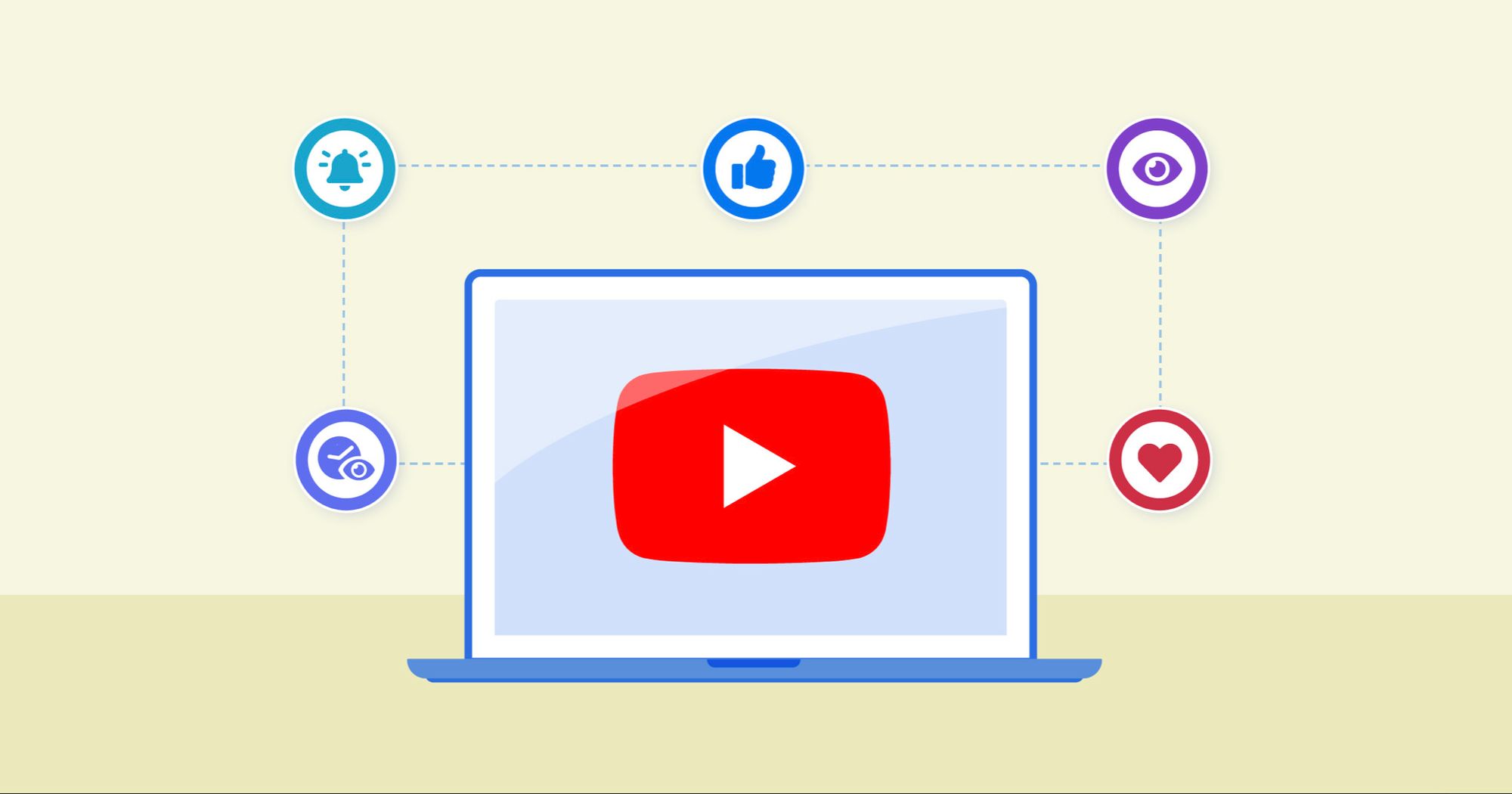
The Engagement Rate
When it comes to YouTube metrics, what people consistently talk about is the engagement rate. It measures the level of interaction—likes, comments, shares, clicks, and saves—showing how well content captures and holds attention.
Calculation:
ER (%) = (Total Engagements ÷ Total Followers) × 100
Total Engagements = Likes + Comments + Shares + Clicks + Saves + other forms of interaction.
The Follower Growth Rate
The follower growth rate, on the other hand, tracks how rapidly a channel gains new followers over time, reflecting its ability to attract and retain an audience. This rate is calculated by dividing the number of new followers by the initial total followers for a given period.
Calculation:
FGR (%) = (New Followers ÷ Initial Follower Count) × 100
calculated over a defined time period (e.g., weekly or monthly).
The Engagement Growth
Lastly, the engagement growth rate monitors changes in audience interaction over time, indicating whether engagement metrics like likes and comments are increasing or declining. This rate is calculated as the percentage change in engagement actions over a set period.
Calculation:
EGR (%) = ((New Engagements - Previous Engagements) ÷ Previous Engagements) × 100
where New Engagements and Previous Engagements refer to engagement totals for different time periods.
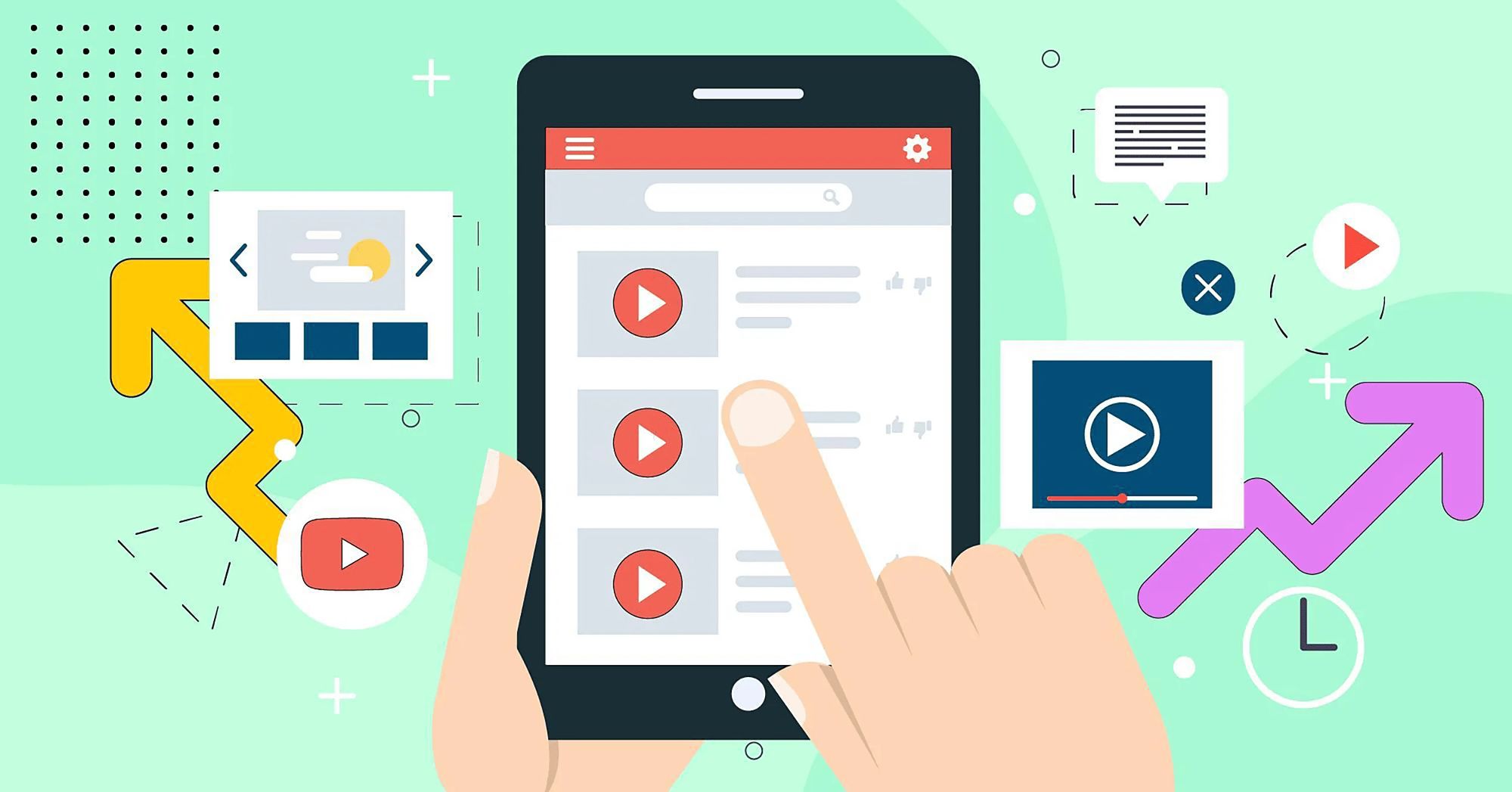
Pro Tip for Brands:
If you're struggling to find the right YouTube influencers, give SocialBook a try. This user-friendly platform allows you to search for influencers based on key metrics like engagement rates, audience demographics, and more. Leverage its data-driven insights to fine-tune your marketing strategy and maximize the effectiveness of your campaigns.

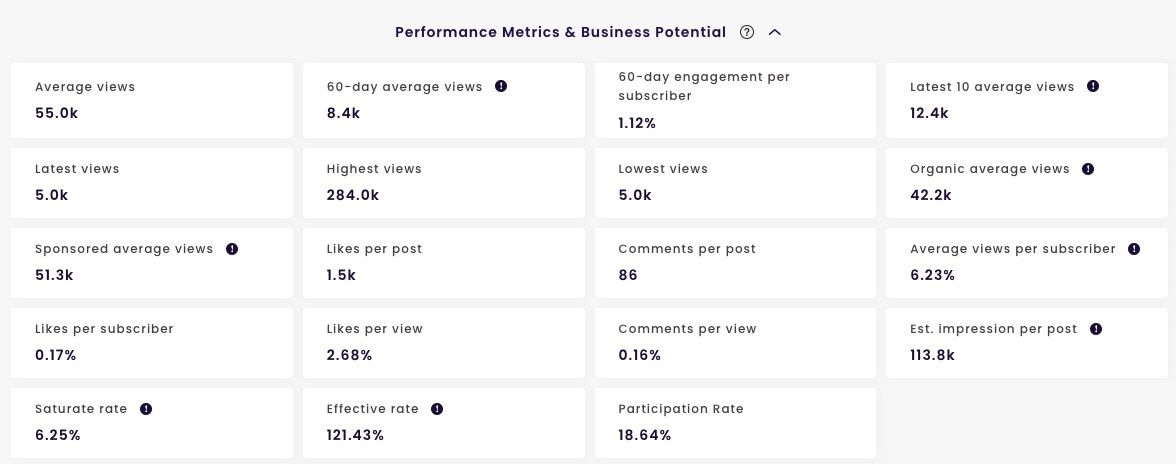

YouTube Average Engagement Rate by Follower Ranges
Nano-Influencers (0 - 10k followers)
Average: 5.43% Top 10%: 10.45%
Nano-influencers, who typically have fewer than 10,000 followers, tend to achieve high engagement rates, with the top 10% of them seeing even better results. This reflects a strong connection with their audience. The growth in their engagement rates is impressive, rising by 192.32%, suggesting that these influencers are not only maintaining engagement with their current followers but are also improving over time. Additionally, they experience a healthy follower growth rate of 9.45%, showing their ability to attract new followers while continuing to engage their existing audience effectively.

Effective Strategies
Nano-influencers are a great choice for campaigns focused on fostering genuine connections and building a community. Their high engagement growth suggests that working with them can lead to increased interaction over time, particularly for products or services tailored to niche markets.
For brands aiming to cultivate a loyal, engaged audience, partnering with top-tier nano-influencers (those in the top 10% for engagement rates) can be highly effective.
However, it's important to note that the average follower growth for this group is relatively low, at just 0.39%. This means that repeated collaborations might not yield significant new customers within a year. Additionally, nano-influencers may lose momentum if their growth rate doesn't align with the higher-performing creators in the top 10%, who experience an average growth of 9.45%.
Micro Influencers (10k - 50k followers)
Average: 5.19% Top 10%: 10.04%
Influencers with follower counts ranging from 10,000 to 50,000 tend to have a solid engagement rate, comparable to that of micro-influencers. What's notable is their impressive engagement growth of 206.21%, which indicates that even as their follower base expands, their ability to engage their audience continues to improve. This could be attributed to more refined content strategies or improved audience targeting. Additionally, they experience a healthy follower growth rate of 14.32%, reflecting their ability to grow their audience effectively while maintaining strong engagement levels.
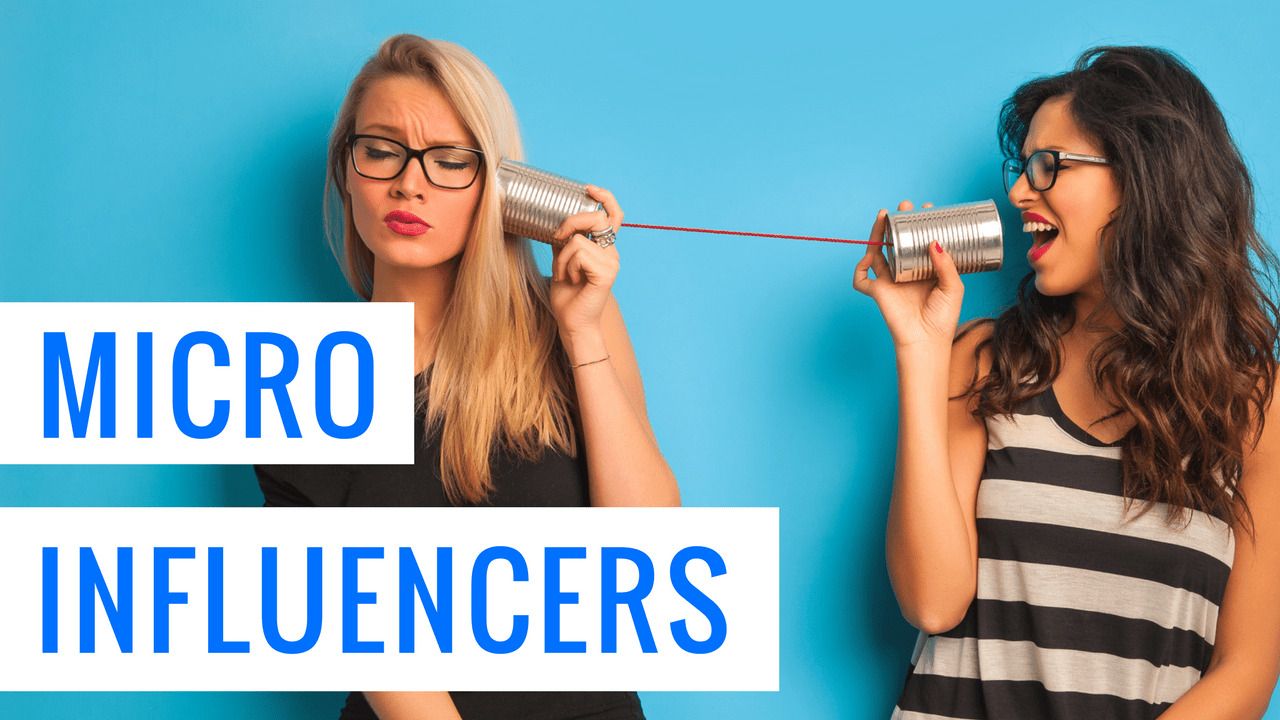
Effective Strategies
Small influencers offer a smart approach for brands that want to increase visibility while maintaining strong engagement. Their ability to grow both their audience and engagement rate suggests they can successfully reach a wider group while still nurturing genuine interactions. Brands aiming to balance reach and engagement should consider partnering with micro-influencers, particularly those who show significant engagement growth. With an average follower growth rate of 8.02%, repeated collaborations with these influencers can help build lasting relationships and drive consistent sales.
For brands looking to maximize the impact of their influencer marketing budget, micro-influencers provide a solid foundation. However, for those who want to minimize risks associated with paid partnerships, working with nano-influencers can also deliver excellent results.
Pro Tip for Brands: Want to boost your brand's visibility through influencer collaborations in 2024? Try using platforms like SocialBook Product Launcher, which streamline the process of connecting with micro-influencers. These platforms allow influencers to pitch their collaboration ideas directly to you, helping you quickly find the ideal match for your brand.
Medium Influencers (50k - 100k followers)
Average: 4.98% Top 10%: 9.51%
Medium influencers, with follower counts between 50,000 and 100,000, tend to see a modest dip in their average engagement rate. However, they still demonstrate strong engagement growth, at 193.23%, and a solid follower growth rate of 12.52%. This suggests they are effectively expanding their audience while maintaining high levels of interaction, especially among the top-tier influencers in this category.

Effective Strategies
Medium influencers strike a good balance between reach and consistent engagement. Their strong engagement growth indicates that brands can expect sustained interaction over time, making them well-suited for campaigns that require both broad visibility and ongoing audience engagement. This tier is perfect for brands looking to expand their marketing efforts while ensuring their messaging remains impactful.
Long-term partnerships are crucial with medium influencers, as they are currently experiencing peak annual follower growth, averaging 9.13%, with the top 10% seeing even higher growth at 12.52%.
Macro Influencers (100k - 500k followers)
Average: 3.85% Top 10%: 7.05%
Large influencers, with follower counts between 100,000 and 500,000, tend to experience a further dip in their average engagement rates. Nevertheless, their engagement growth remains impressive at 174.31%, and they continue to see positive follower growth at 10.08%. This indicates that, despite the challenges of maintaining engagement with a larger, more varied audience, these influencers are still able to drive significant growth in interaction over time, particularly among the top 10% of creators.

Effective Strategies
For brands aiming for broad reach with a moderate level of engagement, large influencers are a strong option. While their average engagement rate may be lower, the potential for growth remains considerable, especially among top-tier influencers. These creators are ideal for brand awareness campaigns where reaching a wide audience takes priority over deeper engagement.
Although their annual follower growth may slow to 4.71%, large influencers continue to see steady growth, making them well-suited for ongoing collaborations over time.
Mega Influencers (500k+ followers)
Average: 2.82% Top 10%: 5.67%
Mega influencers, with follower counts exceeding 500,000, typically experience the lowest average engagement rates due to their larger, more diverse audiences. However, their engagement growth, while more modest at 145.67%, and follower growth at 8.72%, show that they are still effectively expanding their reach, even if individual post engagement is lower.
The top 10% of mega influencers, however, manage to maintain relatively higher engagement rates, indicating that factors like high-quality content and a strong personal brand can still drive significant interactions, even within such a vast follower base.

Effective Strategies
Mega influencers are ideal for large-scale campaigns focused on achieving maximum visibility. They excel in brand awareness efforts, offering the potential for significant reach and impact, particularly when the content is highly engaging. However, relying on recurring affiliate content may not be the most cost-effective approach, as their follower growth tends to be slow, averaging just 0.61% annually. Instead, one-time collaborations centered around brand awareness are a more effective strategy when working with mega influencers.
Conclusions
In conclusion, YouTube remains a powerful platform for influencer marketing, offering brands the chance to boost visibility and engagement across various influencer tiers. By understanding key metrics like engagement rates and follower growth, brands can make data-driven decisions to optimize their campaigns. Whether focusing on community-building or broad brand awareness, selecting the right influencers is crucial for success.
Platforms like SocialBook simplify the process of connecting with the right influencers, making it easier for brands to find those who align with their goals. With the right strategy, YouTube influencers can drive impactful results, helping brands achieve lasting growth and visibility in 2024.

